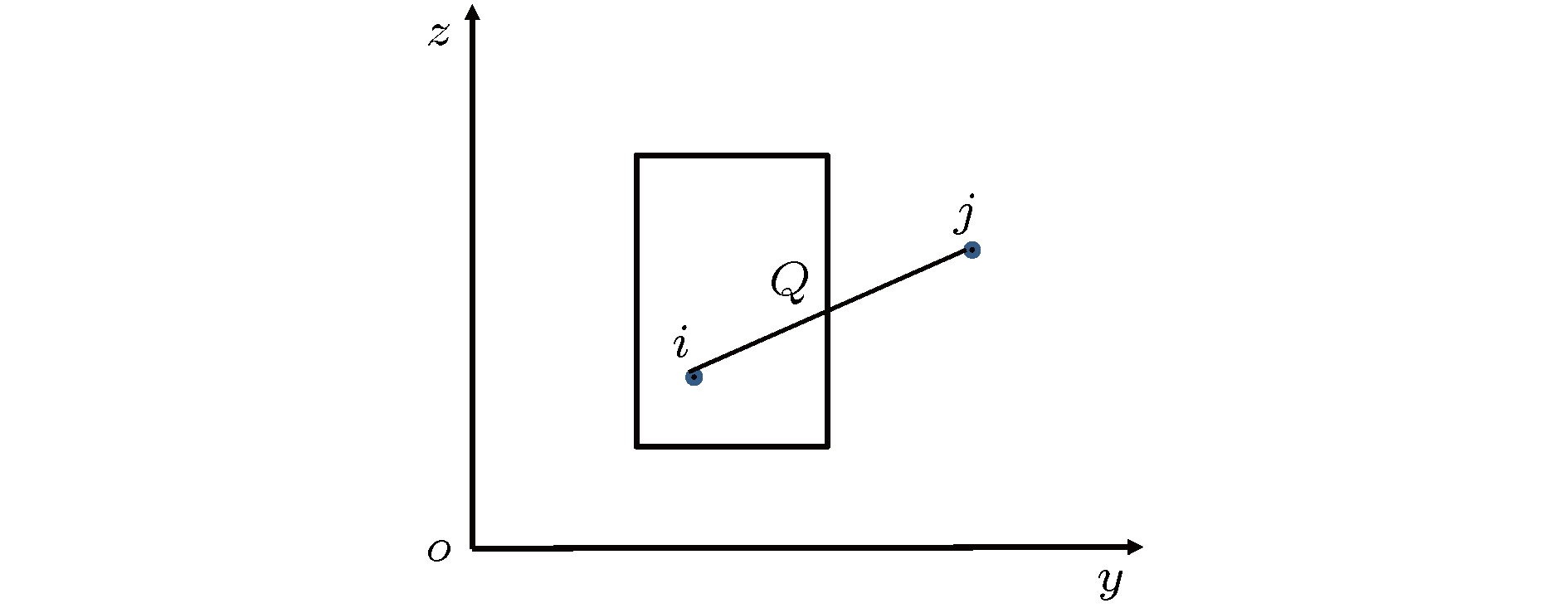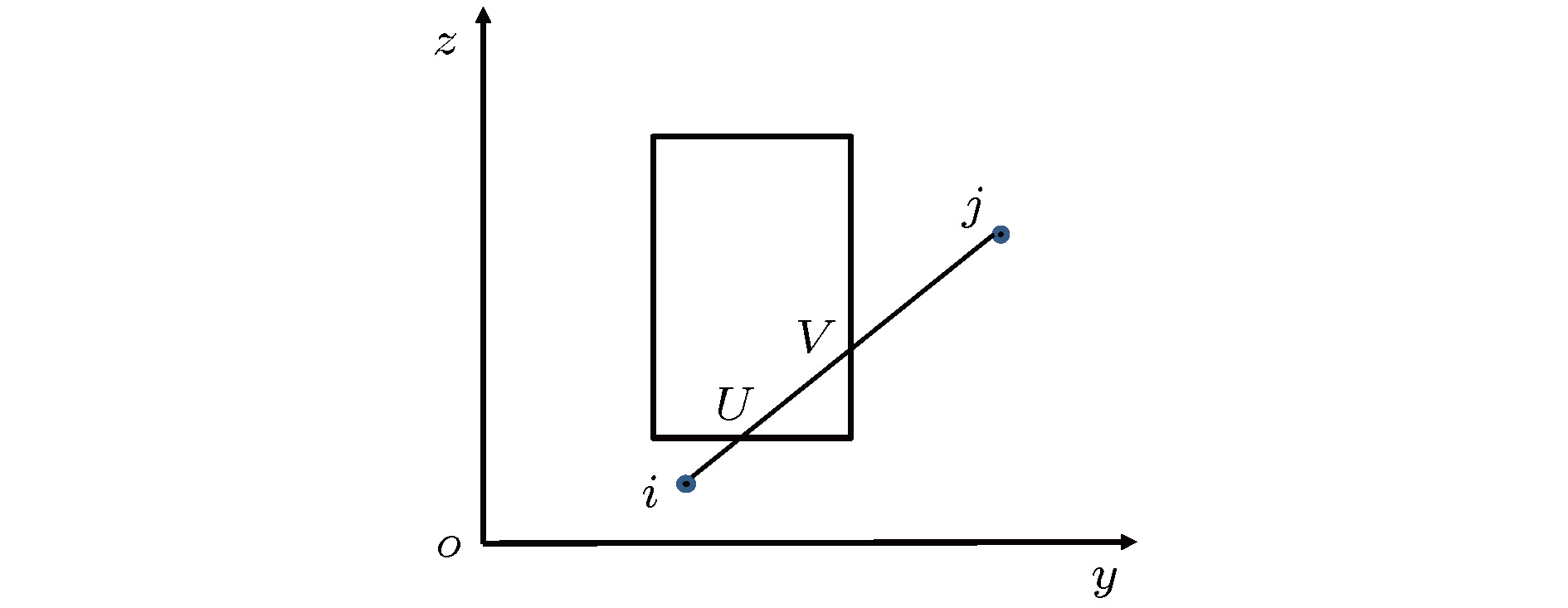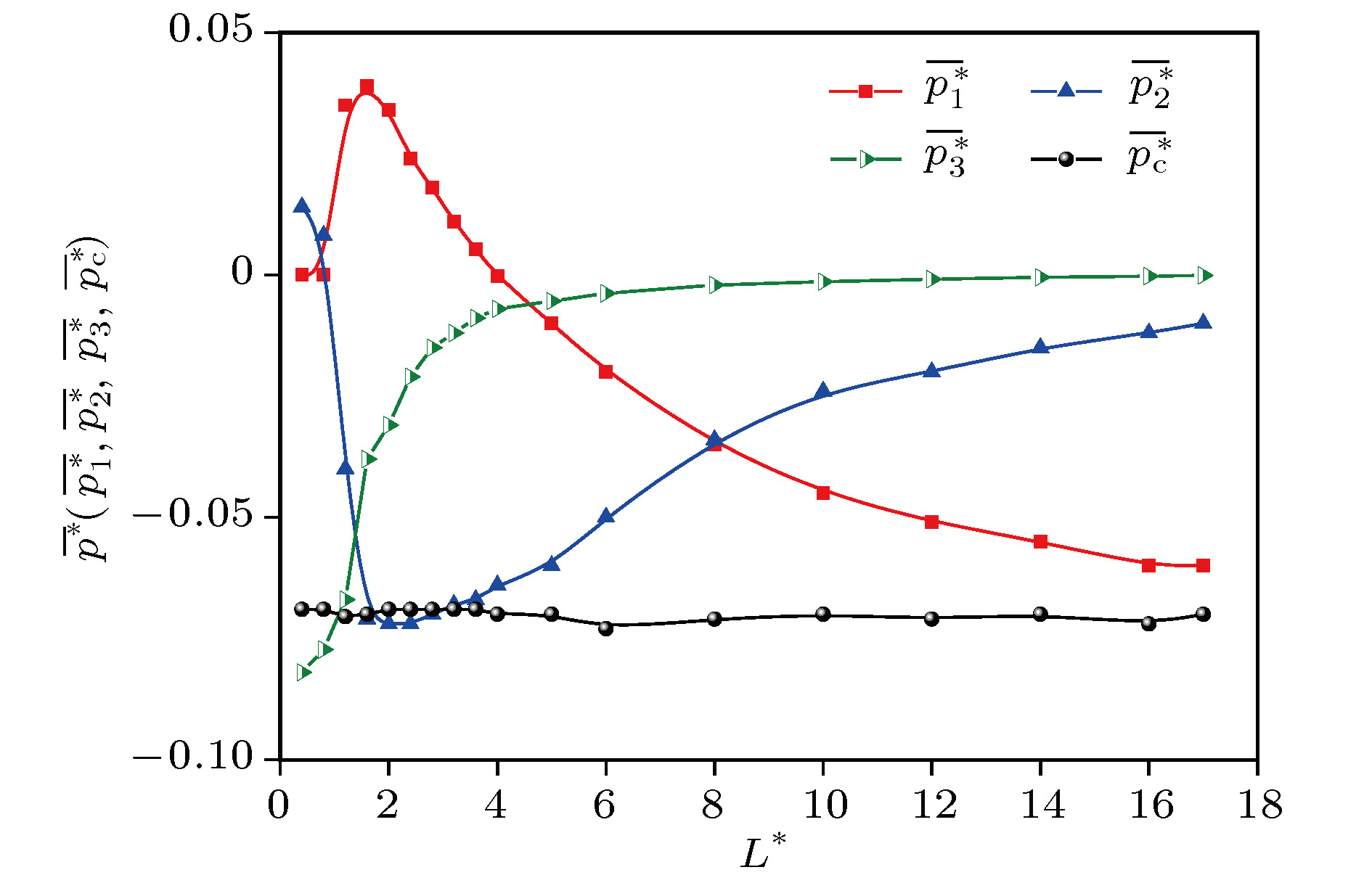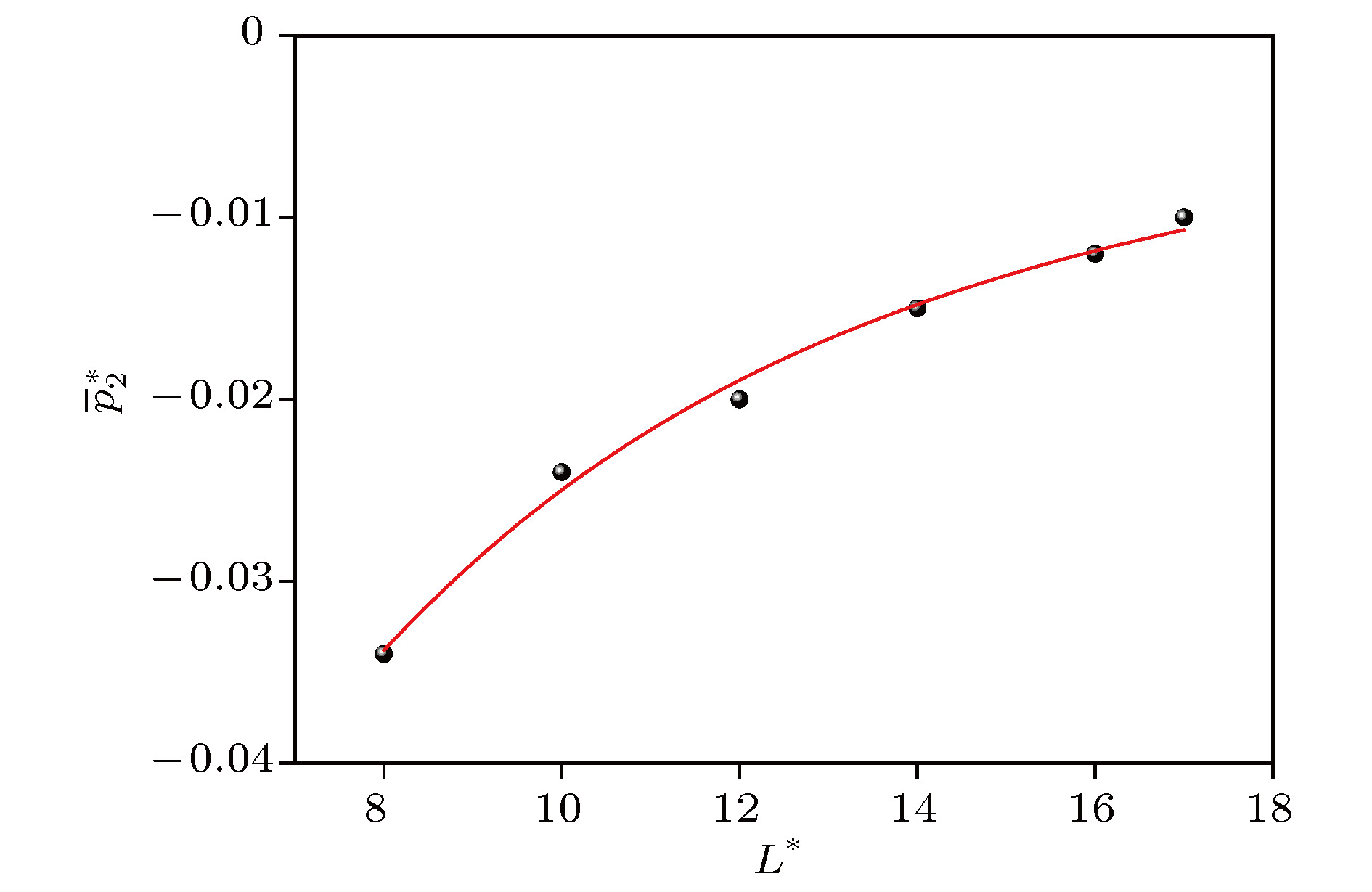-
由维里定理导出的适用于均匀系统的平衡态压力张量表达式可以分成两部分: 动压力张量和位形压力张量. 人们进而对平衡的非均匀系统进行物理分析得到了局部平均压力张量表达式. 本文用更为简洁的方法推导出这一表达式. 给出以原子直径为长度单位的局部平均尺寸L* > 8条件下均匀流体系统平均位形压力中的三部分贡献项(体贡献项、面贡献项和线贡献项)与L*的理论关系式(含有待定参数); 以氩原子气体为例, 在温度180 K、原子数密度0.8下, 对原子间采用林纳德-琼斯势进行了分子动力学模拟, 给出了0.4 ≤ L* ≤ 17条件下三项贡献及总位形压力的模拟曲线, 确定了L* > 8条件下理论关系式中的待定系数, 并得到在L* > 2时, 随着L*的增大, 体贡献项从正压单调下降并趋于负的总位形压力, 面贡献项和线贡献项都单调上升并趋于零, 但线贡献项趋向零最快. 从物理上解释了小尺寸L*下各项行为的复杂特点. 得出L*足够大, 才可以忽略面贡献项和线贡献项, 而在纳米尺度下, 忽略面贡献项和线贡献项, 也就是忽略边界效应会给计算带来明显的误差. 最后通过分子动力学模拟得出位形压力随着温度的升高而升高. 这些结论对于压力张量的分子动力学模拟计算时选项的最优化是有意义的.The expression of equilibrium pressure tensor for uniform systems derived from Virial theorem can be divided into two parts: dynamic pressure tensor and configuration pressure tensor. The local mean pressure tensor is obtained by physical analysis of the equilibrium non-uniform system. In this paper, this expression is derived in a more concise way. The theoretical relationship, with undetermined parameters, between the three parts (the volume contribution, the surface contribution and the line contribution) of the average configuration pressure of a homogeneous fluid system and the local average size L* with the atomic diameter as length unit greater than 8 is given. Taking argon as an example, molecular dynamics simulation is carried out by using the Lennard-Jones potential between atoms at temperature 180 K and density 0.8 (atomic diameter)–3. The simulation curves of configuration pressure and its three parts are given, and the undetermined coefficients in the theoretical relationship under the condition of L* > 8 are determined. It is found that for L* > 2, With the increase of L*, the volume contribution decreases monotonously from the positive pressure to the negative total configuration pressure, while the surface contribution and the line contribution both increase monotonously and tend to zero, but the line contribution tends to zero fastest. The complex characteristics of various behaviors are explained physically. It is concluded that the surface contribution and the line contribution can be neglected only if L* are large enough. In nanoscale, the neglect of the surface contribution and the line contribution, i.e., the neglect of the boundary effect, will bring obvious errors to the calculation. Finally, molecular dynamics simulation shows that the configuration pressure increases with the increase of temperature. These conclusions are significant for optimizing the selection of pressure tensor in molecular dynamics simulation.
-
Keywords:
- Virial theorem /
- molecular dynamics simulation /
- surface tension /
- local pressure tensor /
- configuration pressure
[1] Clausius R 1870 Philosoph. Magaz. 40 122
[2] Maxwell J C 1874 Nature 10 477
 Google Scholar
Google Scholar
[3] Kirkwood J G, Buff F P T 1949 J. Chem. Phys. 17 338
 Google Scholar
Google Scholar
[4] Irving J H, Kirkwood J G 1950 J. Chem. Phys. 18 817
 Google Scholar
Google Scholar
[5] Harasima A 1958 Adv. Chem. Phys. 1 203
[6] Schofield P, Hendersen J R 1982 Proc. R. Soc. London Ser. A 379 231
 Google Scholar
Google Scholar
[7] 毛志红, 包福兵, 余霞 2013 低温工程 3 47
 Google Scholar
Google Scholar
Mao Z H, Bao F B, Yu X 2013 Cryogenics 3 47
 Google Scholar
Google Scholar
[8] 周绍华, 黄永华 2018 低温物理学报 40 49
Zhou S H, Huang Y H 2018 Chin. J. Low. Temp. Phys. 40 49
[9] Cormier J, Rickman J M, Delph T J 2001 J. Appl. Phys. 89 99
 Google Scholar
Google Scholar
[10] Cheung K S, Yip S 1991 J. Appl. Phys. 70 5688
 Google Scholar
Google Scholar
[11] Sun Z H, Wang X X, Soh K A, Wu H A 2006 Model. Simul. Mater. Sci. Eng. 14 423
 Google Scholar
Google Scholar
[12] Xu R, Liu B 2009 Acta Mech. Solida Sin. 22 644
 Google Scholar
Google Scholar
[13] Li Y F, Cui M Q, Peng B, Qin M D 2018 J. Mol. Graph. Model. 83 84
 Google Scholar
Google Scholar
[14] Torres-Sánchez A, Vanegas J M, Arroyo M 2015 Phys. Rev. Lett. 114 258102
 Google Scholar
Google Scholar
[15] Chen Y 2016 Europhys. Lett. 116 34003
 Google Scholar
Google Scholar
[16] Yu Y X, Jin L 2008 J. Chem. Phys. 128 014901
 Google Scholar
Google Scholar
-
表 1
$\overline {p_1^*} $ ,$\overline {p_2^*} $ ,$\overline {p_3^*} $ 和$\overline {p_{\rm{c}}^*} $ 的模拟值Table 1. Values of
$\overline {p_1^*} $ ,$\overline {p_2^*} $ ,$\overline {p_3^*} $ and$\overline {p_{\rm{c}}^*} $ given by simulation.${L^*}$ $\overline {p_1^*} $ $\overline {p_2^*} $ $\overline {p_3^*} $ $\overline {p_c^*} $ 0.4 0 0.014 –0.082 –0.069 0.8 0 0.00814 –0.0773 –0.069 1.2 0.035 –0.04 –0.067 –0.0705 1.6 0.039 –0.071 –0.038 –0.07 2 0.034 –0.072 –0.031 –0.069 2.4 0.024 –0.072 –0.021 –0.069 2.8 0.018 –0.07 –0.015 –0.069 3.2 0.011 –0.068 –0.012 –0.069 3.6 0.0053 –0.067 –0.0089 –0.069 4 –3 × 10–4 –0.064 –0.007 –0.07 5 –0.01 –0.06 –0.0054 –0.07 6 –0.02 –0.05 –0.0038 –0.073 8 –0.035 –0.034 –0.0021 –0.071 10 –0.045 –0.024 –0.0014 –0.07 12 –0.051 –0.02 –9 × 10–4 –0.071 14 –0.055 –0.015 –5 × 10–4 –0.07 16 –0.06 –0.012 –2.6 × 10–4 –0.072 17 –0.06 –0.01 –1 × 10–4 –0.07 -
[1] Clausius R 1870 Philosoph. Magaz. 40 122
[2] Maxwell J C 1874 Nature 10 477
 Google Scholar
Google Scholar
[3] Kirkwood J G, Buff F P T 1949 J. Chem. Phys. 17 338
 Google Scholar
Google Scholar
[4] Irving J H, Kirkwood J G 1950 J. Chem. Phys. 18 817
 Google Scholar
Google Scholar
[5] Harasima A 1958 Adv. Chem. Phys. 1 203
[6] Schofield P, Hendersen J R 1982 Proc. R. Soc. London Ser. A 379 231
 Google Scholar
Google Scholar
[7] 毛志红, 包福兵, 余霞 2013 低温工程 3 47
 Google Scholar
Google Scholar
Mao Z H, Bao F B, Yu X 2013 Cryogenics 3 47
 Google Scholar
Google Scholar
[8] 周绍华, 黄永华 2018 低温物理学报 40 49
Zhou S H, Huang Y H 2018 Chin. J. Low. Temp. Phys. 40 49
[9] Cormier J, Rickman J M, Delph T J 2001 J. Appl. Phys. 89 99
 Google Scholar
Google Scholar
[10] Cheung K S, Yip S 1991 J. Appl. Phys. 70 5688
 Google Scholar
Google Scholar
[11] Sun Z H, Wang X X, Soh K A, Wu H A 2006 Model. Simul. Mater. Sci. Eng. 14 423
 Google Scholar
Google Scholar
[12] Xu R, Liu B 2009 Acta Mech. Solida Sin. 22 644
 Google Scholar
Google Scholar
[13] Li Y F, Cui M Q, Peng B, Qin M D 2018 J. Mol. Graph. Model. 83 84
 Google Scholar
Google Scholar
[14] Torres-Sánchez A, Vanegas J M, Arroyo M 2015 Phys. Rev. Lett. 114 258102
 Google Scholar
Google Scholar
[15] Chen Y 2016 Europhys. Lett. 116 34003
 Google Scholar
Google Scholar
[16] Yu Y X, Jin L 2008 J. Chem. Phys. 128 014901
 Google Scholar
Google Scholar
计量
- 文章访问数: 11886
- PDF下载量: 56
- 被引次数: 0













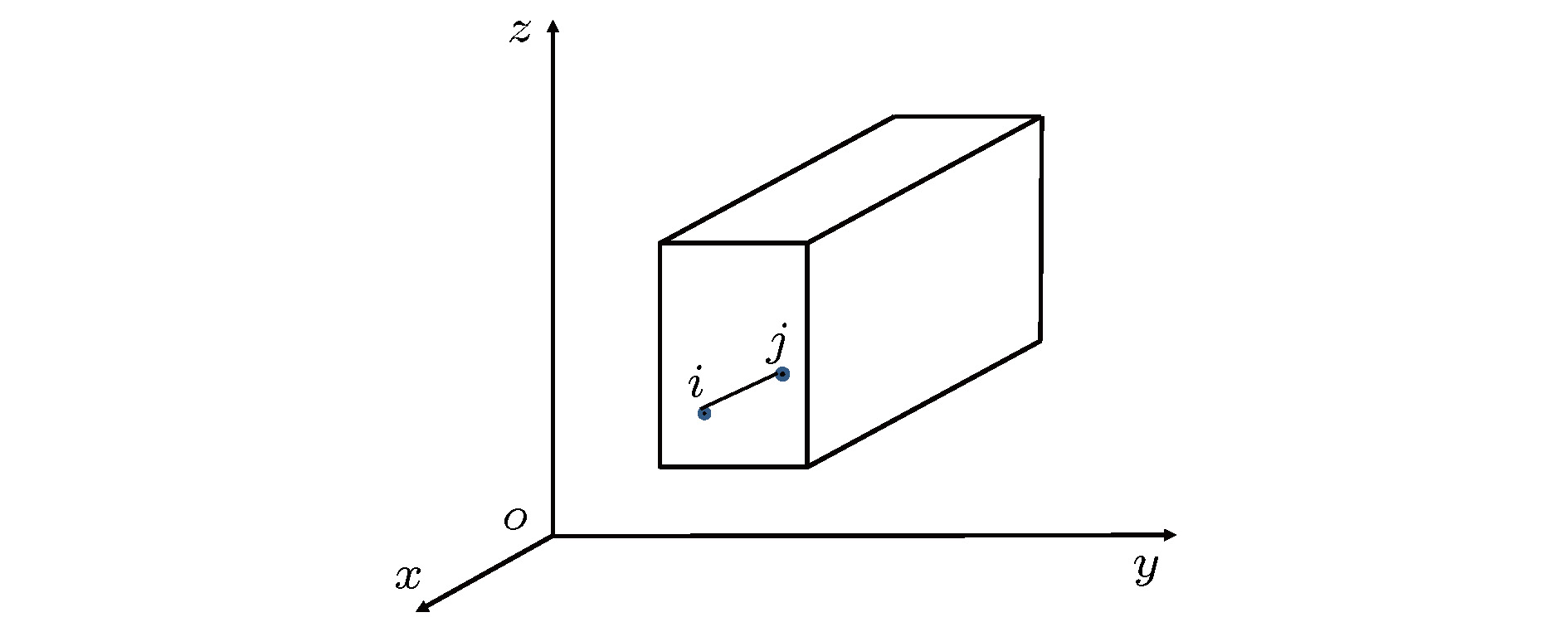
 下载:
下载:
